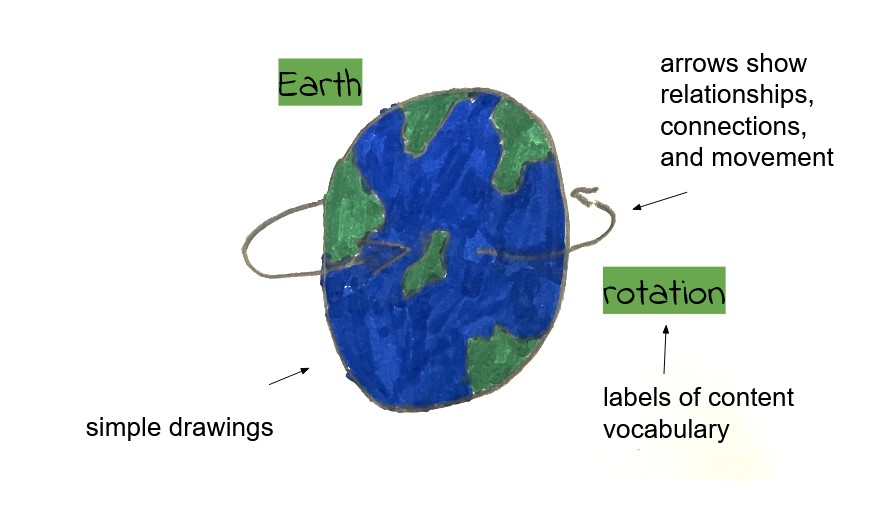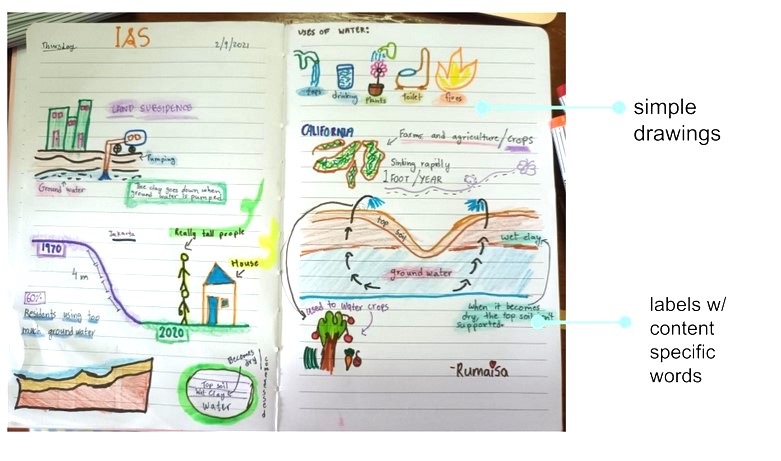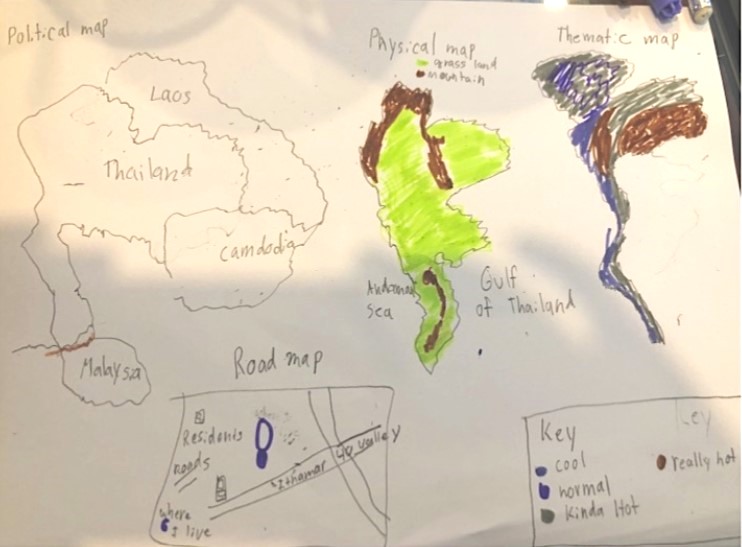Sketchnotes

Sketchnotes are notes that students create from a video, lecture, text, or lesson incorporating labeled, simple drawings. This strategy is part of Colorin Colorado's ELL Strategy Library and can be used to support academic language development for all students.
Strategy Overview
How This Strategy Supports Language Development
Making sketchnotes can increase students' comprehension of content because it is an active way to synthesize content knowledge. Labeling the sketches provides the needed vocabulary and is linked to a visual for greater retention and easier referencing.
Step-by-Step Instructions
- Present one detail about a concept at a time. If showing a video, pause the video after each essential detail.
- Pause to have students draw a visual of that detail.
- Share your version of the sketchnote as a model.
- Have students write a short annotation about that detail.
- Write the keywords on your model and share with students.
Lessons Learned
- Practice making a sketchnote for a video, text, or mini-lesson before presenting to the class. Note where to pause the lesson or video for each sketch.
- Model sketchnoting to demonstrate how to make simple drawings and annotate them.
- Encourage students to make simple drawings without a lot of detail. Make some sample basic drawings (such as stick figures) to show that students shouldn't be concerned about their drawing skills.
- Require students to write at least one keyword for every drawing.
- Have students share their sketchnotes with a partner and describe what they drew and why.
- Have students annotate their drawing in their heritage language and write content-specific words in English, too.
Differentiation
Entering/Emerging
- Have students draw their own sketches, but provide students with the text used for the annotations.
- Provide a model for students to copy at very early stages of English acquisition.
- Partner beginners with a bilingual partner who shares the same heritage language so they can discuss the content while making the sketchnote.
- Have students work in groups to verbally summarize the process and concept using their sketchnotes and in their heritage language.
Developing
- Have students work with a partner to create their sketchnotes.
- Encourage students to make their own labeled drawings before sharing yours with the class.
- Ask students to compare and contrast their sketchnote with yours. Encourage them to notice similarities and differences.
- Have students work in groups to verbally summarize the process / concept using their sketchnotes.
Expanding
- Ask advanced students to create the model for the class and explain why they chose to draw each sketch for that chunk of text.
- Have students turn their sketchnotes into a written one-paragraph summary.
Co-Teaching Considerations
Content or Grade-Level Teacher
- Choose the text, video, or mini-lesson/lecture about grade-level content.
- Chunk the text, video, or lecture for your co-teacher by identifying the time stamps for the pauses.
- Emphasize when to draw arrows to show connection.
English Language Development Teacher
- Identify the most important images to draw and labels for this concept/topic.
- During the pause after each chunk of text, video, or lecture, guide students in drawing a specific item in their sketchnote.
- Monitor students’ sketches and provide linguistic support for their annotations (word banks, sentence frames, etc.).
- Have students reflect on how they can use this strategy in another class.
Examples
These examples show some key features that students can add to their sketchnotes.
| Content | Sample Sketchnotes |
|---|---|
| Rotation of the Earth |  |
| Information about ground water |
|
| Different Kinds of Maps |
|
Resources
- Video: Sketchnotes for the Classroom: Why, How, and Tips
- Introducing Sketchnotes in a Class
- Sketch notes for multilingual learners: Resources from Valentina Gonzalez
- Helping Young Multilingual Learners Develop Their Metacognitive Skills (Edutopia)
- Why Teachers Are So Excited About the Power Of Sketchnoting (KQED)
- How to Teach Academic Content to Multilingual Students (Empowering MLs by Tan Huynh)
References
- How and Why to Introduce Visual Notetaking with Your Students (Edutopia)
- How to Get Started with Sketch Notes In Your Classroom (Reading and Writing Haven)
- Sketch Noting with Your Students: The Why and How (Seidlitz)




